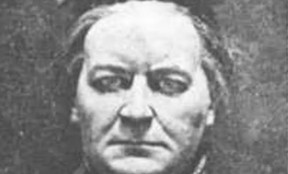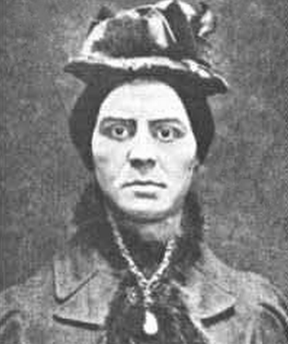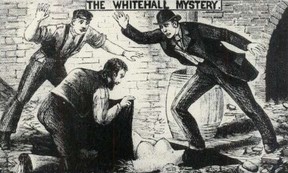
Article content
During Queen Victoria’s time, the sun literally never set on the British Empire.
Advertisement 2
Article content
As we honour the famed queen this weekend, it’s worth noting her times produced a plethora of lurid murders that set the stage for the true-crime explosion more than 100 years after her 1901 death.
Murder in Victorian times coincided with a newly literate working class and the rise of the penny press that made newspapers affordable. Readers gorged on the arsenic-spiced tales of murderous mistresses, homicidal husbands, vile baby farmers, and pioneering serial killers.
Given the tidal wave of press Jack The Ripper has received over the years, we’ll give him a pass this time.

AMELIA DYER
Dyer is probably the most prolific killer in British history.
She had been trained as a nurse but when her husband died in 1869 leaving her a widow, she turned to the sinister practice of baby farming.
Advertisement 3
Article content
Baby farmers adopted unwanted children for a fee with the idea of eventually adopting them out. But in many cases, that’s not what happened. Instead, the helpless infants would be murdered.
In Dyer’s case, it was estimated she killed more than 400 babies after starving them or drugging them. She would then toss their bodies into the River Thames.
But Dyer killed too often and became careless. A jury took just four minutes to find her guilty. And on June 10, 1896, she was hanged at Newgate Prison.

DR. NEILL CREAM
Cream was second banana to Jack The Ripper’s top dog in Victorian serial killing.
Called the Lambeth Poisoner, Cream murdered at least 10 people, starting with the chloroform murder of Catharine Hutchinson Gardner in 1879 in London, Ont. She had been pregnant and Cream refused to perform an abortion on her.
Advertisement 4
Article content
The killer doctor next landed in Chicago where he performed abortions on working-class women and prostitutes. His favoured method of killing was rat poison. He was nabbed in the Windy City and jailed but his brother later implored (bribed) the Illinois governor to spring the good doctor.
Cream’s next stop was England. Death followed for 19-year-old prostitute Ellen “Nellie” Donworth on Oct. 13, 1991. Four more murders followed until the cops caught on to Cream, who fled by ship to Canada.
He was nabbed and returned to London where he was tried, convicted and sentenced to death. The Rx for Cream was the hangman’s noose and he swung on Nov. 15, 1892, at Newgate Prison.

RICHMOND MURDERESS
Irish immigrant Kate Webster was no stranger to crime.
Advertisement 5
Article content
In 1879, Webster was hired as a domestic servant to twice-widowed Julia Martha Thomas in Richmond.
Thomas, who was in her 50s, had a poor opinion of Kate’s work ethic and soon told her wayward servant to hit the road. But when Thomas returned from church, Kate tossed her down a flight of stairs and for good measure, strangled her boss.
Webster then proceeded to dismember her tormentor’s body before boiling it in the laundry copper (NOTE: Thomas’s head wasn’t found until 2010). Kate then heaved the pieces into the dirty Thames.
She later told cops: “At first I thought her a nice old lady … but I found her very trying, and she used to do many things to annoy me during my work.”
Kate Webster was hanged on July 28, 1879, at Wandsworth Prison.
Advertisement 6
Article content

THAMES TORSO MURDERS
In October 1884, a woman’s dismembered body parts were discovered floating in the Thames River.
In May 1887, workers retrieved a bundle from the river, inside was the torso of a woman. Various parts of the same body began turning up around London over the next few months. In the fall of 1888, more dismembered female remains were found.
Finally, in June 1889, the torso of homeless sex worker Elizabeth Jackson, who was pregnant, was found floating in the famed river. She was the only victim ever identified. Another dismembered victim was discovered the following year in Whitechapel.
The case remains unsolved.

THE BERMONDSEY HORROR
Husband and wife Marie and Frederick Manning committed one of Victorian England’s most sensational homicides and even inspired Charles Dickens to create the character of Hortense in Bleak House.
Advertisement 7
Article content
Beautiful Marie Manning was a Swiss maid who toiled in aristocratic homes but before that she was the lover of “gauger” Patrick O’Connor. Later she married Frederick Manning and the two conspired to kill Patrick for his dough.
So, in 1849, they lured him to dinner and blew his brains out. They buried O’Connor under the floor, took his money, and made a run for it. But the body was found and the gruesome twosome was nabbed.
For the first time in nearly 200 years, a husband and wife were hanged together. On Nov. 13, 1849, at Horsemonger Lane Gaol the Mannings got the big adios.
Stay connected with us on social media platform for instant update click here to join our Twitter, & Facebook
We are now on Telegram. Click here to join our channel (@TechiUpdate) and stay updated with the latest Technology headlines.
For all the latest For Top Stories News Click Here

